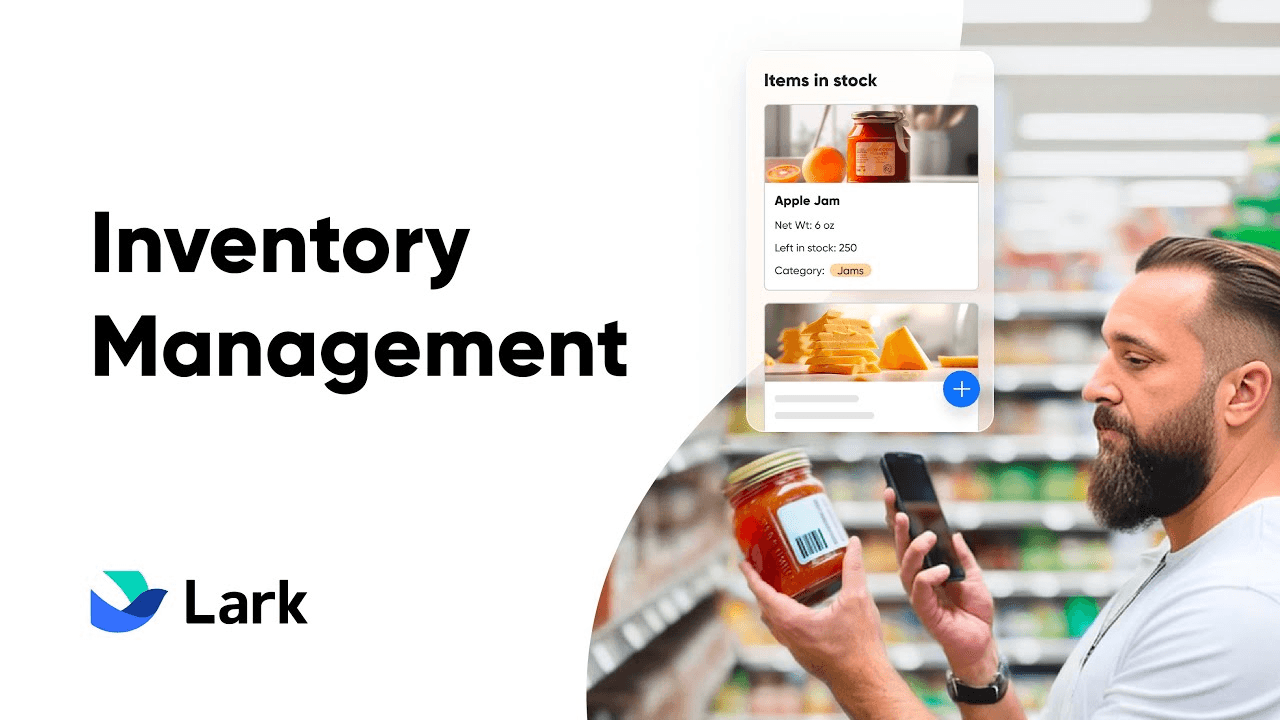In today’s fast-paced retail environment, effective retail inventory management is more than just a business necessity—it’s a competitive advantage. It’s the backbone of any successful retail operation, enabling businesses to meet customer demand, reduce operational costs, and maximize profitability. Whether you’re managing a small boutique or overseeing a large retail chain, mastering inventory management is essential for staying ahead in the market.
In this guide, we’ll explore the critical steps, tools, and best practices for effective retail inventory management. By the end of this article, you’ll have a clear roadmap to optimize your inventory processes, reduce inefficiencies, and enhance customer satisfaction.
Understanding the basics of retail inventory management
Inventory is the lifeblood of any retail operation. At its core, retail inventory management is about balancing stock levels efficiently – ensuring you have enough products to meet customer demand without tying up too much capital in unsold items. It’s not just about counting items on a shelf; it’s a strategic, multi-step process that requires a keen eye for detail, a clear understanding of consumer behavior, and the right tools to bring clarity and control to what might otherwise be a chaotic system.
Retail inventory management, when done right, helps in reducing holding costs, preventing stock-outs, minimizing waste, and enhancing overall operational efficiency. It hinges on accurate record-keeping, forecasting, and an agile approach to meeting market changes. The first step is to truly understand the fundamental components of the process and the reasons behind each step.

Image source: freepik.com
Key steps in successful retail inventory management
Let me share these with you to help demystify what can often seem like an overwhelming task. These steps include planning, procurement, tracking, forecasting, replenishment, and review. Each stage is interdependent and plays a crucial role in ensuring your inventory remains accurate and efficient.
Step 1: Planning and setting clear objectives
Before doing anything else, we always emphasize the importance of planning. Planning in retail inventory management involves setting clear objectives that align with your overall business goals. Consider the following when planning:
Define your targets: What are your inventory goals? Are you aiming to reduce holding costs, minimize waste, or improve your customer satisfaction ratings? Clearly outlining these objectives provides a solid foundation.
Understand your product mix: Different products have different demand cycles. Hence, segmenting your inventory into categories like fast-moving consumer goods, seasonal items, and slow-moving stock is vital.
Determine your budget: Inventory planning is inherently tied to your financial planning. Knowing how much capital you can safely invest in your inventory without overextending your resources is key.
I recommend using planning templates or software to keep your objectives aligned and measurable. The clarity that comes with a well-laid plan sets the tone for the next stages.
Step 2: Efficient procurement and supplier management
Once your plan is in place, the next step is procurement. Retail inventory management is deeply intertwined with your relationship with suppliers. The foundation of effective procurement lies in:
Negotiating favorable terms: Building strong supplier relationships ensures better pricing, flexible payment options, and sometimes priority when stock is limited.
Ordering in the right quantities: Balancing bulk discounts against potential overstock is challenging but crucial. Placing orders that reflect your forecasted demand helps maintain the right levels.
Ensuring consistency and reliability: Not every supplier will deliver on time or meet quality expectations. Regular reviews and feedback loops are necessary to maintain consistency.
When discussing inventory management with peers, a common thread is the importance of integrating procurement systems with your inventory management software. This integration helps create a seamless flow of information, ensuring that supplier data, purchase orders, and inventory levels sync perfectly.
Step 3: Real-time tracking and monitoring
One of the cornerstones of retail inventory management is real-time tracking. The ability to monitor your inventory in real time is indispensable. This involves utilizing modern tools to capture data from every nook and corner of your inventory process.
Barcode scanning and RFID technologies: These systems simplify inventory counting and reduce human error by automatically updating inventory records.
Cloud-based inventory software: With real-time tracking, you gain immediate insights into product movement and can react to market demands swiftly. I’ve seen firsthand how transforming everyday inventory operations with technology can save time and reduce inaccuracies.
Integrated systems: Connecting point-of-sale (POS) systems with warehouse management tools ensures that every sale or return is updated in real time, maintaining accuracy across the board.

Step 4: Demand forecasting and analysis
Demand forecasting is perhaps one of the most intellectually stimulating parts of retail inventory management. I always approach forecasting by examining both historical data and current market trends. Here are some techniques I employ:
Historical analysis: Studying past sales data provides invaluable insights into seasonal trends, peak periods, and slow cycles. Even without specific data points, understanding market rhythms helps predict future demand.
Market sentiment and trends: Beyond numbers, listening to your customers and monitoring broader market shifts can signal when to adjust stock levels. Keeping an ear on industry news or competitor shifts adds another layer to your analysis.
Statistical models and predictive analytics: Leveraging software that uses machine learning can provide more accurate results. Though these tools require an initial investment, the long-term payoff in accuracy and efficiency is worth it.
The goal here is to prevent both overstock and stock-out scenarios. By forecasting properly, you align your inventory levels with actual market needs, reducing waste and optimizing your financial resources.
Step 5: Strategic replenishment and cycle counts
Replenishment is where the rubber meets the road. Once you have planned, procured, tracked, and forecasted accurately, systematic replenishment ensures that your inventory remains aligned with demand without overburdening storage or cash flow. I recommend a few best practices:
Establish reorder points: Setting clear inventory thresholds triggers automatic replenishment orders before stock depletes. This ensures an uninterrupted supply during peak demand periods.
Implement cycle counts: Instead of a massive physical inventory check once a year, regular cycle counts help keep your numbers accurate and catch discrepancies early.
Automate where possible: Modern inventory management systems can automatically flag items that need replenishing and even generate purchase orders. Incorporating automation reduces human error and saves valuable time.
It is important to note that combining traditional inventory techniques with the latest technology transforms replenishment into a seamless process that is both proactive and reactive to real-time changes.

Image source: freepik.com
Step 6: Performance review and continuous improvement
After implementing the above steps, it’s critical to regularly review your inventory management performance. In my experience, continuous improvement is achieved through:
Regular audits and data reviews: Periodically assessing your inventory records allows you to identify trends, discrepancies, and opportunities for further refinement.
Feedback from teams: Your warehouse, sales, and procurement teams are on the front lines. Their feedback can highlight recurring problems or suggest innovative solutions.
Leveraging KPIs: Key performance indicators (KPIs) such as turnover rates, holding costs, and lead times provide quantifiable metrics to measure your performance.
Embracing change: The retail landscape is ever-evolving. A willingness to adjust strategies, adopt new technologies, or revise forecasts is essential for staying competitive.
Every business is unique, so it's better to consistently tailor these steps to fit the specific needs of the operation and remain open to evolving methods and innovative tools.
Leveraging technology for enhanced inventory control
Technology has reshaped retail inventory management, making real-time data, predictive analytics, and integrated systems game-changers. There are many businesses transition from manual ledger-based inventory to sophisticated, cloud-based systems, and the benefits have been enormous:
Automation and accuracy: Automation minimizes human error. From barcode scanners to RFID tags, the ability to quickly and accurately update stock levels is indispensable.
Integrated platforms: Linking your inventory management system to POS, ERP, and CRM tools ensures a seamless flow of information. This integration leads to better decision-making across functions.
Mobile access: Implementing mobile-compatible inventory systems allows on-the-go updates and checks. Tools like Lark have revolutionized team collaboration by enabling seamless communication and real-time updates irrespective of physical location.
Data-driven decision making: Advanced tools allow you to run detailed analytics and generate reports that expose weak links in your supply chain, highlight seasonal fluctuations, and provide actionable insights into how to optimize future orders.
Setting up a reliable, integrative technology ecosystem requires upfront effort but yields tremendous long-term efficiencies.
Tactical approaches to managing surplus and obsolescence
No retail manager wants to end up with excess stock or obsolete items. However, neglect or miscalculation can often lead to these challenges. Here are some of the tactical approaches I’ve implemented:
Discounts and promotions: When you're faced with surplus stock, creative marketing strategies like clearance sales can help move inventory quickly. Promotions not only clear outdated products but also attract new customers.
Streamlined returns and exchanges: A robust process for handling returns ensures that these items are quickly reintegrated into the inventory, assessed for quality, and returned to stock or appropriately discounted.
Dynamic pricing strategies: Adjusting pricing based on demand fluctuations can help mitigate the risks associated with overstock. Flexibility in pricing often encourages customers to purchase items before they become obsolete.
Regular inventory forecasting reviews: Continual recalibration of demand forecasts can prevent overstocking. This means revisiting your predictive models regularly and updating them with the latest market trends.
In each case, transparency and communication with both suppliers and sales teams are vital. Sharing insights about surplus or declining demand can help prompt proactive decisions, mitigating risks before they snowball.
Risk management and safety stock strategies
The keys to reducing risk include the use of safety stock and contingency planning:
Establish safety stock levels: Safety stock acts as a buffer for unpredictable demand. Determining the correct level involves analyzing historical sales data, supplier reliability, and lead times.
Scenario planning: It’s smart to prepare for the unexpected by examining “what if” scenarios. What happens if a key supplier faces a delay? What if there’s a sudden surge in demand? Establishing clear action plans for these scenarios minimizes disruptions.
Regularly review supplier performance: Consistently monitoring supplier reliability can help you decide whether to diversify or consolidate. Having multiple suppliers for critical items can provide an excellent safety net.
Invest in training: Educating the team on how to handle unforeseen issues ensures that everyone is prepared. Well-trained personnel on risk mitigation strategies can respond calmly and efficiently to crises.
I’ve found that a strong risk management plan provides peace of mind, and it reinforces trust between various departments and with external partners. This integrated approach ensures that retail inventory management remains robust even during challenging times.
Exploring the role of Lark in inventory management
Lark is more than just a collaborative platform; it’s a tool that enhances operational coherence. Here’s how I’ve deployed Lark in my inventory management routines:
Centralized communication: Lark brings together channels of communication for inventory management teams. Whether it’s discussing updates in stock levels, emergency procurement requests, or routine cycle count alerts, Lark’s integrated chat and video conference features keep everyone in sync.
Real-time document sharing: Instead of emailing spreadsheets back and forth, Lark’s cloud-based document management allows multiple team members to access and edit inventory records simultaneously. This transparency helps uncover errors quickly.
Task management and reminders: With Lark’s task management tools, assigning responsibilities for routine checks, audits, and planning sessions is much easier. These reminders ensure critical tasks don’t fall through the cracks.
Integration with third-party tools: Lark’s API support means it can work in tandem with your existing inventory or ERP systems, ensuring that data flows seamlessly between platforms.
While Lark is one tool that has greatly improved internal communication, I always remind myself—and my teams—that technology should enhance human expertise, not replace it.

Overcoming challenges in retail inventory management
In my journey, I have encountered a few recurring challenges. Let’s take a look at some of these issues and explore practical strategies to overcome them:
Data discrepancies: Occasionally, real-time tracking tools may show inconsistencies due to human entry errors or technical glitches. I recommend routine cross-checks with manual audits and implementing corrective action plans if discrepancies persist.
Demand unpredictability: Market trends can change unexpectedly. By maintaining flexible forecasting models and continuously monitoring market sentiment, you can swiftly adjust inventory levels. Flexibility is my mantra here.
Supplier issues: Inconsistent lead times or product quality concerns from suppliers are a common hurdle. This can be mitigated by building strong relationships, establishing clear SLAs, and diversifying your supplier base.
Warehouse inefficiencies: Even with a detailed plan, poor warehouse organization can cause delays. Investing in inventory layout planning and regular staff training on efficient practices have always paid off.
Approaching these challenges with resilience has allowed me to refine my strategies and build systems that are prepared for almost any eventuality.
Adopting an agile mindset
Retail inventory management benefits enormously from adopting an agile mindset. What do I mean by this? An agile approach means continuously iterating your processes, learning from past mistakes, and not being afraid to pivot strategies when the situation demands. Here are some tactics I swear by:
Embrace small, incremental changes: Rather than overhauling the entire system when something goes wrong, I focus on gradual but impactful modifications.
Celebrate minor wins: Acknowledging improvements, even small ones, boosts team morale and fosters a culture of continuous improvement.
Stay informed: The retail industry is ever-evolving. Regularly attending conferences, reading industry publications, and participating in training sessions are all part of staying agile.
Be open to experimentation: Not every solution will work perfectly the first time. Testing new techniques or tools in limited capacities can provide insights that, when refined, might revolutionize your entire inventory process.
An agile mindset in retail inventory management means viewing setbacks as opportunities for innovation and growth, a philosophy that I’ve always found to be incredibly empowering.
FAQs: retail inventory management insights
I know you might have questions about retail inventory management, so I’ve compiled some of the most frequently asked questions to help clarify any remaining doubts.
What strategies can I use for effective retail inventory management?
Key strategies include assessing your inventory levels, categorizing stock with the ABC method, and implementing a robust tracking system.
How often should I audit my inventory?
I recommend conducting a full inventory audit at least once a year and performing cycle counts quarterly to maintain accuracy.
What is the role of technology in retail inventory management?
Technology helps automate processes, improve accuracy, provide real-time tracking, and generate valuable insights for better decision-making.
How can I improve my inventory turnover rate?
Monitor your historical sales data, implement just-in-time ordering, and identify slow-moving products to clear out older stock effectively.
What should I consider when choosing inventory management software?
Look for features like real-time tracking, integration capabilities, user-friendliness, and reporting options that suit your business needs.
Conclusions
By integrating robust tools, establishing clear procedures, and embracing continuous improvement, you can transform your inventory challenges into opportunities for growth. I encourage you to start small, implement one or two new techniques, and then gradually expand those changes across your operations. With perseverance and the right strategic moves, you’ll be well on your way to mastering retail inventory management.If you’re interested in more detailed guides, updates on industry best practices, or need personalized advice on your inventory strategies, please feel free to reach out.
Are you ready to take charge of your retail inventory management? Explore our recommendations for inventory management tools today and start optimizing your operations!
Table of Contents
















